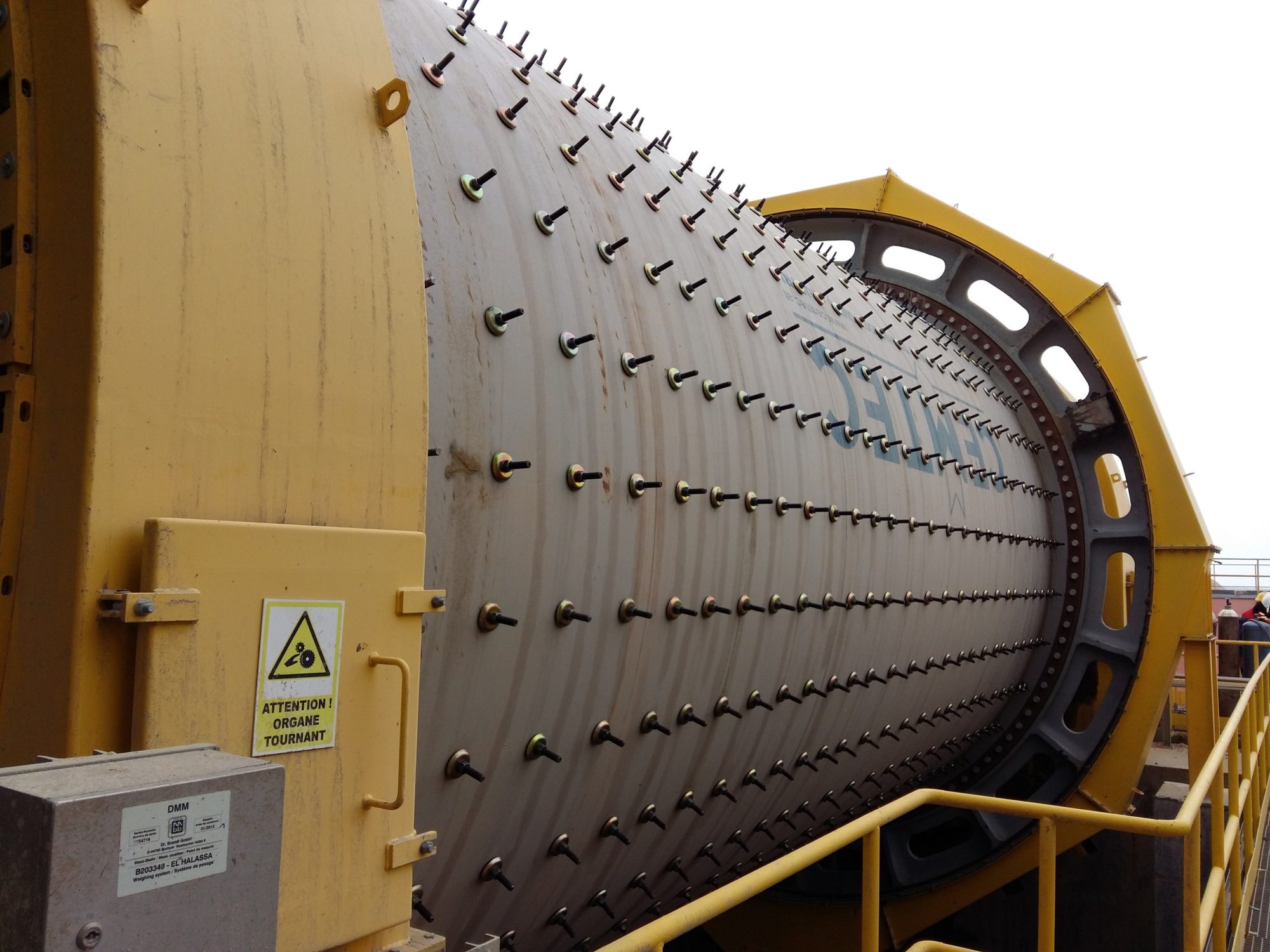In one of its largest scrubber installations to date, Multotec Rubber is helping a phosphate mine in Morocco achieve new levels of efficiency thanks to the installation of customised liners.
The scrubbers measure 6.5 m in diameter and 11 m in length – large dimensions necessitated by the process plant throughput of 12 Mt/y. The installation, conducted during the March quarter of 2019, was carried out in response to a serious challenge faced by the customer. The existing head plates were wearing out at double the rate of the shell plates. This was leading to additional maintenance shutdowns during the life of the liners, with associated extra costs.
According to Mohamed Trabelsi, Senior Sales Engineer at Multotec Rubber, the collaboration with the customer included sending a Multotec team to site to first assess the situation. Multotec already had a longstanding relationship with the customer at this process plant, with Multotec trommel screens having operated successfully at the plant for over three years.
“Our team of engineers were on site to gather vital operating information including throughput tonnages, particle size, charge levels and rotational speed,” Trabelsi said. “We also assessed the variable speed drive system.”
This data was processed using the Rocky DEM simulation software, in which Multotec Rubber has made a significant investment. Leveraged by engineers, this software can simulate the full lifecycle of liners and predict when the scrubber will no longer perform efficiently, according to the company.

Rocky DEM allows engineers to accurately simulate all operating parameters in the scrubber. These include the shape and size of ore particles in the slurry being fed into the scrubber slurry, the charge level, the linings, attrition rates, particle trajectories and the scrubber’s rotational speed, Multotec Rubber says.
“We can therefore simulate the actual operating conditions of the scrubber, as well as the performance of the head and shell liners,” Trabelsi said. “Upon our assessment of the results, it was found we needed a different configuration of liners to the previous one in this application. In fact, the solution was a uniquely designed liner configuration – quite different to what is traditionally used.”
He notes that, in Multotec’s experience of high throughput scrubber applications, it is critical to lift the material away from the head plate, thereby alleviating the sliding abrasion which causes excessive wear.
“Our objective was to ensure optimum wear life with the lowest total operating costs,” Trabelsi said. “Efficiency was enhanced by ensuring that the liner profile configuration was suited to the specific operating conditions. By doing this, the wear life in this application has been improved.”
Since installation, the liners have been performing in line with the customer’s expectations and are expected to have a lifespan of over five years. These lifecycle predictions also allowed the payback period to be accurately determined, assisting the customer in making the best operational and financial decision, the company said.
The liners are locally manufactured at Multotec Rubber’s ISO 9001:2015 facility near Johannesburg, South Africa, which has benefitted from continued investment in technology over the years, the company said.
“Our quality manufacturing facility expedites the production of liners engineered for individual applications,” Trabelsi said. “The entire process from design stage to installation took just 12 weeks – in response to the urgency resulting from the premature failure of the previous scrubber lining installation.”
Trabelsi also noted that – even after finding an appropriate solution – mines must constantly anticipate changing conditions in their process plants.
“As mines develop, the orebody changes; this brings changes to their throughput capacities and mill operating parameters,” he said. “If a process plant has liners that have run for 10 years, it is not necessarily a given that this liner configuration is still suitable for the application.”
He emphasises that it is critical to conduct an assessment exercise in every application, before quoting on a replacement liner. Most importantly, the liners should be engineered in accordance with the current operational parameters of the mine.
“This is why Multotec Rubber considers it so important that our engineers go to site and assess the actual mill operating data for themselves,” he said. “This makes it possible for us to gain access to the information from the plant operating system, so that the best solution can be engineered for the mine.”
Correctly designed liners will offer greater energy efficiency and reduce media consumption, according to Trabelsi. This is significant, as energy input and media consumption account for around 80% of the grinding costs in the plant – depending on the application.
“The more we are able to simulate, the more accurate information becomes available,” Trabelsi said. “We are then able to accurately predict the savings and payback period that could be expected at the plant – as a result of improved efficiency and reduced power consumption per tonne.”











